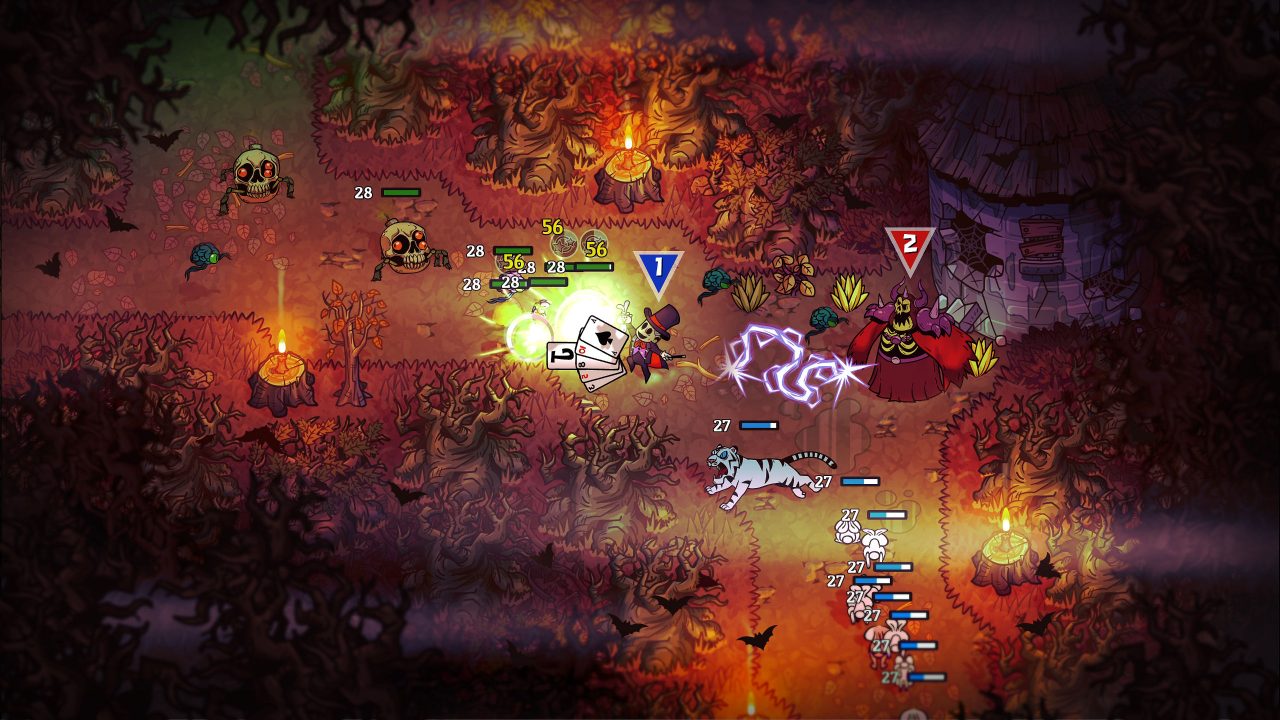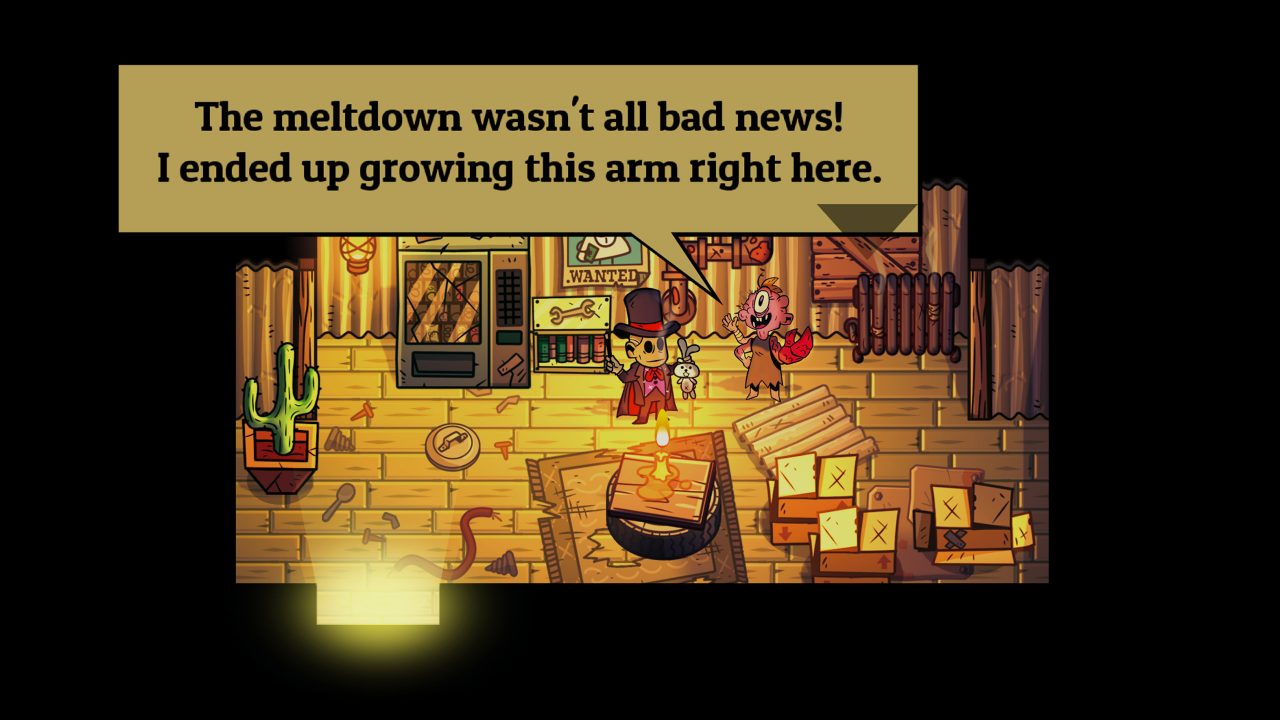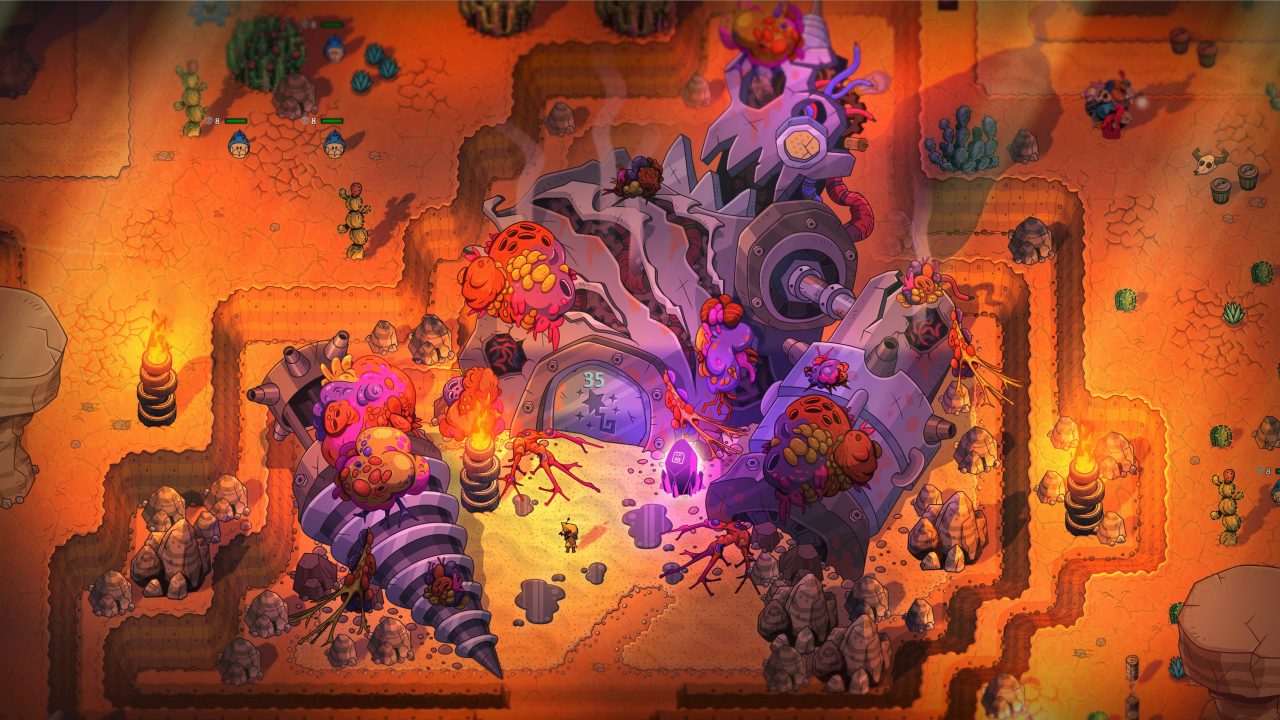Everybody wants to rule the world according to Tears for Fears, so it follows logically that nobody would save it. Drinkbox Studios, the makers of the beloved Metroidvania game Guacamelee!, have traded their luchador mask for a magic wand in their new action RPG, Nobody Saves The World.
An RPG opening with an amnesiac hero is nothing new, but the star of Nobody Saves the World is exceptionally so. Not only does your person have no memory, but they don’t have anything. With no hair, facial features or money, and possibly not even a species, your character is the blankest of slates. But upon stumbling across a magic wand, you find that with just a wave of that wand, you can transform into other Forms (think classes or jobs), like a Rat or Horse. All your Forms give you a much better shot of surviving a fantasy world littered with hostile creatures. The owner of that wand, the heroic Nostramagus, has gone missing as a calamity looms, and you’re thrust into a struggle to, as the title says, save the world.
Though the narrative doesn’t venture far beyond the typical RPG plot, Nobody Saves the World’s silliness and irreverence give its story life. The ‘90s are coming back in style, and this game feels like an ode to that time. The animation style — as well as the attitude — make it feel like the fantasy-themed Nickelodeon cartoon that never was. On your way to save the world, you cross paths with some zany situations, decent puns, and pop culture references. While sidequests mostly feature simple tasks, many come with wonderfully provocative descriptions or names, such as the racing minigame titled “Gotta Go Fast!” In a mission where you have to accompany a courier, he labels you a “mail escort” (wink). Another story wants you to fall in love … as a Horse. The writers earned their pay here.

Your personal growth as a hero is the real story of Nobody Saves the World. The game’s underlying mechanics aren’t too complicated. You start with only a couple of Forms, but as you level them up, you unlock more. Each Form has a signature attack — a standard offensive move unique to that Form. As they gain levels, Forms develop more powerful and varied attacks. The first few hours of the game keep you in a small, confined area, providing you with time to acclimate to the world and a few of the more basic Forms. Once you finish this slowish introductory period, the game opens up, letting you explore just about everything (though your low levels might present a natural barrier to some areas) and, more importantly, share moves and abilities between Forms. The gameplay would resemble The Legend of Zelda if, in that classic series, every new boomerang or bomb turned Link into an entirely different character.
Nobody Saves the World‘s extensive arsenal of attacks and abilities makes for a cornucopia of fun combos to discover and play with. Though there are situations where some Forms might work better than others, you can mostly tailor your loadout to your preferred playstyle. The Slug was among my favorite Forms early on. Whenever you move as the Slug, you leave behind a slimy trail that inflicts slow on enemies who touch it. Then, I discovered an ability that caused enemies to explode upon receiving any status effect, making for a destructive combo. It’s always enjoyable to tinker with your loadout and see what wild strategies you can concoct.
The marketing for Nobody Saves the World boasts that it features over 15 Forms, and that’s not just fluff. Each one handles distinctly. It’s not just that they all have varying stats; each Form moves differently, has a signature attack that complements a different approach and offers shareable abilities that open up new strategies for other Forms. A few of the early Forms didn’t click with me, but I always enjoyed taking each one for a spin. The Guard, for one, looks and feels like a knight, with an expectedly straightforward scheme. More complex is the Magician, who draws random cards that do varying amounts of damage and pulls rabbits and other animals out of his hat to aid him. Deeper in the game, every time I unlocked a new Form, I excitedly thought to myself, “is this one my favorite now?” If there’s anything to complain about regarding Forms, it’s that their progression doesn’t make sense thematically. I’m not sure how becoming a better Slug and Bodybuilder enables you to become a Rogue. From the bottom of the progression tree to the top, Forms become more complex to use, so it makes sense in that way. Their progression just feels random from a narrative perspective.

Each Form also boasts distinct quests. Most of these quests feel like achievements or trophies, especially those calling for you to perform a specific attack a fixed number of times. The more quests you unlock, the more their requirements escalate. For example, some quests ask you to hit a particular number of enemies at once with a move or strike enemies with a specified attack after afflicting them with a certain status effect. To complete certain Forms’ quests, you need to mix their abilities with those of other Forms. Many of the sidequests you pick up on your way across the world are more like riddles you solve with your myriad Forms and abilities. Nobody Saves the World considers both Form and function.
Each Form offers you several quests at any given time. Thanks to these quests and the others you pick up on your journey, it feels like you’re constantly advancing. When enemies kill you in Nobody Saves the World, you keep your progress and return to your last save point or the beginning of the dungeon where you bit it. Thus, it always feels like you’re moving forward, even when you “fail,” which is a good lesson for life, too. It’s an emboldening and empowering feeling that you can always gain something from your experiences even if you don’t succeed.
As I transferred between Forms, abilities grew on me, and I happily migrated my loadout from one Form to the next. But Nobody Saves the World doesn’t want you to rest on your laurels; it constantly switches up its challenges and forces you to adapt. Wards are the biggest gamechanger as far as your plans go. Each attack falls into one of four categories: sharp, blunt, light and dark. As you can see, this elemental system is relatively minimalist. However, in some dungeons, you must hit enemies with a specific move type to break their Ward before you can hurt them. Since each Form has a unique signature attack, the Wards can force you to change your strategy and come up with a different approach. Thus, the game constantly encourages you to try out various Forms and loadouts.

You can experiment on the mounds of enemies the game throws at you. With your wild abilities and so many opponents, Nobody Saves the World recalls an over-the-top variation on the classic arcade game Gauntlet. The gobs of things to fight and the fun-to-use Forms keep dungeons consistently engaging and fun. Enemies aren’t the most memorable, but their programming is impressive for being mere fodder. I was surprised to see their intelligent behavior, like using elements of the environment to their advantage and fleeing at just the right moments. Though the game can be challenging because of the sometimes overwhelming number of enemies, it never feels unfair or unbeatable. Still, enemies sometimes get stuck on objects or each other, making them easy targets.
As I alluded to earlier, Nobody Saves the World’s characters and animations recall Saturday mornings as a ‘90s kid, searching out the weirdest and most obnoxious cartoons. The environs you traverse are an odd mashup of modern, fantasy, sci-fi and horror styles. The music continues the ‘90s vibes. Most of the soundtrack resembles a high-fidelity approach to low-fidelity pixelated sounds from the NES or SNES eras, and the theme for big fights takes inspiration from late-’90s pop like Britney Spears and the Backstreet Boys. A game with a strong emphasis on action would fall apart without great controls. Though the control scheme isn’t overly taxing, it feels wonderfully responsive using an Xbox controller.
Nobody Saves the World provides a large toybox and an enjoyable world in which to play with it. The Forms at the center of its gameplay feel significantly different from one another and are all exciting to use once you get a handle on them. Thanks to the shareable abilities, you can also experiment with endless combinations of moves. The main story makes for a satisfying and entertaining 20-ish hours with some challenges still left over to complete. At the end of the day, everybody is somebody, even if you’re Nobody.


